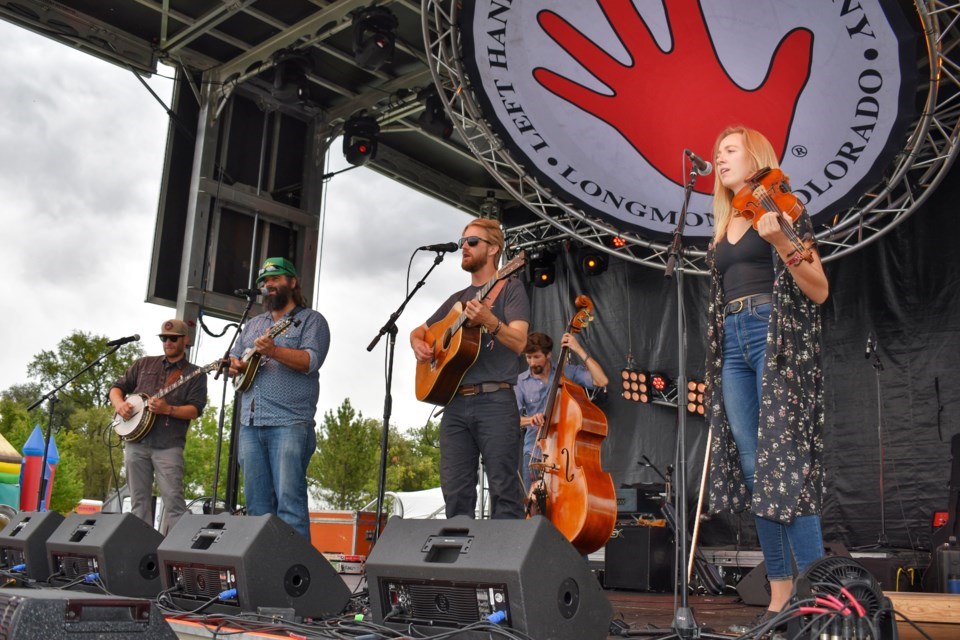Visit Longmont recently found itself in the unenviable position of having to reverse funding to its 2020 Tourism Grant Program award recipients because all of the events were canceled in response to the coronavirus pandemic and related statewide safety mandates.
And with the future still cloudy, funding could be off the table for 2021, too.
The slate of this year’s scratched events included Wibby Brewing’s Hooplagers, The Colorado Cider Guild’s Pressed Fest, Left Hand Brewing’s Oktoberfest and the Lightshine Raddler Ride presented by Bicycle Longmont, along with the Future Arts Foundation’s Winter Folk and Strings and Stories festivals.
Each event was awarded up to $5,000 in funding from Visit Longmont.
The Visit Longmont grants come with specific requirements that weren’t likely to be met during the pandemic, such as helping raise Longmont’s profile as a tourist destination, quantifying hotel stays tied to an event, and marketing events outside of the city. When large in-person gatherings were ruled out, meeting those guidelines grew more difficult if not impossible.
“We needed to make sure that the grant funding adhered to the requirements of the initial application. We were prepared to distribute grant funding if in-person events were able to be held,” said Mikayla Adair, Visit Longmont marketing and communications coordinator.
Visit Longmont did offer organizations a path through which they could retain their funding, Adair said. If events were moved to a virtual format, recipients could re-apply. However, this approach didn’t prove to be popular.
“No one went through the process again for their virtual event. At this point, the funds are not going to be used for 2020,” Adair said.
With an uncertain future forecast, Adair anticipates grants might not be given out in 2021 and, when the program eventually comes back, it might look different.
“I think we’re kind of just in a pause and for 2021, wanting to see what the future of events looks like just a little bit more clearly,” she said. “I don’t think anyone can say at this point where exactly we’re headed.”
Changes in the structure of the Tourism Grant Program are just a small part of the overall negative impacts Visit Longmont has been experiencing as a result of the pandemic.
“Quite frankly, Visit Longmont has been very affected with COVID-19 and budget cuts, given that we are funded by lodgers’ tax,” she said. “People cannot travel and will not travel, and business travel has essentially stopped and groups and meetings and conventions have stopped, so our funding has significantly dropped.”
Funding for Visit Longmont primarily depends on “revenues from hotel and occupancy tax receipts,” Eric Kean, president of the Visit Longmont board and executive director of Left Hand Brewing Foundation, said in an email in July.
A 2% lodging tax is added to each hotel stay. The tax is paid to the city, which then funds a portion of the Visit Longmont budget with the tax.
Hotel occupancy has been down significantly since the onset of the pandemic.
In August, hotels in Longmont were 44.3% full, according to Rocky Mountain Lodging Report data. That occupancy percentage marks another step in a slow bounceback for local lodging numbers, which plummeted to 14.4% occupancy in April, according to the Lodging Report. Occupancy was 43.6% in July, 28.8% in June, 19.2% in May and 30% in March, according to the report data.
For comparison, the occupancy rates in 2019 were 53% in March, 53,9% in April, 63.4% in May, 74.5% in June, 88.4% in July and 80.2% in August, according to Lodging Report data.
With the number of hotel stays declining, revenue from the lodging tax has followed suit. As of August, year-to-date collections totaled $125,649, a decrease of 63.6% from $347,526 in the same period in 2019, according to data provided by the city.
The financial pressure caused by a decline in hotel stays also is prompting other changes for Visit Longmont, including the loss of its executive director. In June, it released Executive Director Nancy Rezac citing pandemic-related financial pressures. Since that time, the agency has been run by other staff, with Kean acting as volunteer interim executive director.
Meanwhile, Visit Longmont is doing what it can to support tourism and hospitality-focused businesses in the city. One of its strategies includes working with its partners in the hotel industry and in business development organizations to bolster local support.
“We’re working to come up with new programs and align our messaging out to the community and our audience segments,” Adair said. “We’re continuing to deploy our free passport that’s a tour of Longmont craft drinkeries in town. We’re trying to do as much free promotion for local businesses as we possibly can on our social channels and websites. We’re trying to help as much as we can.”



